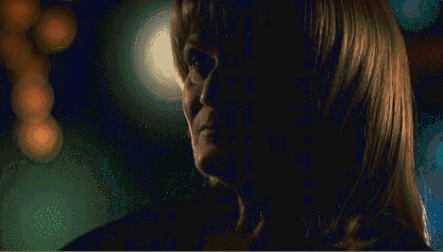From Woodstock to Manson: another 40th anniversary comes calling on History Channel
09/07/09 10:04 AM

By ED BARK
Reliving the Manson Family's gory killing spree is something we all probably could do without.
This is the 40th anniversary summer, though. So after the peace, love and happiness of Woodstock, here's the inevitable blood, guts and horror of the Tate-LaBianca murders.
CNN's Larry King Live last week had a crack at former Manson girl Linda Kasabian and Sharon Tate's surviving sister, Debra. Now comes History Channel's Manson, a two-hour re-dissection complete with Kasabian, Debra Tate, "Family" member Catherine "Gypsy" Share, prosecutor Vincent Bugliosi, and a big batch of no-name actors playing Charles Manson and various Manson-ites. It premieres on Labor Day Monday at 8 p.m. (central).
Kasabian, as with King, appears at her insistence as a darkly lit, semi-disguised key player in the August 1969 murders. Granted immunity in return for her testimony against the defendants, she's been "in hiding" for many years, but periodically breaks her silence. The last time was on the 20th anniversary of the killings, when she talked to A Current Affair. Kasabian wasn't in shadows then, telling an interviewer, "He (Manson) was kind of magnetic. There was just something about him that intrigued me."
On History Channel's Manson, she says, "There was a magnetism about him. Charisma, charm, power."
But as played by Adam Wilson (the upcoming Suck), Manson is never more than flat-out creepy, whether beating "Gypsy" into submission or lopping the ear off of a victim whose killing preceded the Tate-LaBianc slayings.
Kasabian, who had a toddler daughter at the time, is portrayed as a willowy innocent by Tamara Hope (Sand Serpents). Everyone is amazingly well-scrubbed, although by all accounts the accommodations and hygiene were decidedly grimy at their Spahn Ranch lair in remote Southern California.
Kasabian accompanied Manson Family members on both of the latter killing missions, but by her account never directly participated.
"I felt like an empty shell," she recollects. "My body was there, but I wasn't."
At the Tate home, she witnessed the outdoor stabbings and shootings of both Voityck Frokowsky and his girlfriend, heiress Abigail Folger.
"I saw a man, and he had blood all over his face. And he looked right into my eyes. And he was dying," Kasabian remembers.
At this point she's sobbing. In prosecutor Bugiosi's view, the long-repentant Kasabian "was not cut out of the same cloth as the Mansion family." But Debra Tate says she never should have been exonerated in return for the testimony that helped convict Manson and followers Susan Atkins, Patricia Krenwinkel, Leslie Van Houten and Charles "Tex" Watson.
The History Channel presentation manages to hold interest without delving into how Manson recruited his flock and why they pledged such blind allegiance to him.
The never publicity-shy Bugliosi's famous Helter Skelter book gets into many of these mind-manipulating particulars. But the first book on the Manson family, Five To Die, was written well before his successful prosecution of the murders. Reissued on the 40th anniversary, it's a briskly written evocation of those times by Ivor Davis and Jerry LeBlanc.
Davis, a regular presence on the networks' semi-annual "press tours" for TV critics, is credited with laying out "the blueprint for the prosecution" by Aaron Stovitz, whose violation of a gag order resulted in his being replaced as chief prosecutor on the Manson case. Five To Die is a case study in old-school shoe leather reporting, with Davis quickly on the scent as the then West Coast correspondent of The London Daily Express.
Before his Manson family excavation, Davis spent five weeks covering The Beatles on their first North American tour. Their "connection" to the murders, at least in Manson's mind, is via the "Helter Skelter" track on the White Album. Manson interpreted the lyrics as a call for racial revolution. Paul McCartney, in a 1973 interview with Davis, termed this "a lot of old shite."
More information on Five To Die is available here. On Monday night's Manson, it's Kasabian who gets the last words as the camera frames her in a final dark-side-of-the-moon closeup.
"It was a waste of life that had no reason, no rhyme," she says. "It was wrong and it hurt a lot of people. Still now today and always forever."
GRADE -- B-minus
